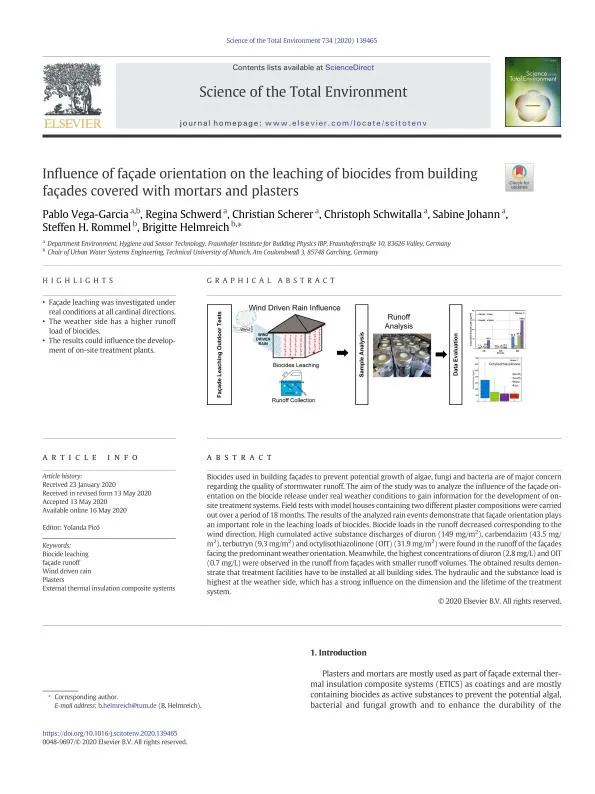Biocides used in building façades to prevent potential growth of algae, fungi and bacteria are of major concern regarding the quality of stormwater runoff. The aim of the study was to analyze the influence of the façade orientation on the biocide release under real weather conditions to gain information for the development of on-site treatment systems. Field tests with model houses containing two different plaster compositions were carried out over a period of 18 months. The results of the analyzed rain events demonstrate that façade orientation plays an important role in the leaching loads of biocides. Biocide loads in the runoff decreased corresponding to the wind direction. High cumulated active substance discharges of diuron (149 mg/m²), carbendazim (43.5 mg/m²), terbutryn (9.3 mg/m²) and octylisothiazolinone (OIT) (31.9 mg/m²) were found in the runoff of the façades facing the predominant weather orientation. Meanwhile, the highest concentrations of diuron (2.8 mg/L) and OIT
(0.7 mg/L) were observed in the runoff from façades with smaller runoff volumes. The obtained results demonstrate that treatment facilities have to be installed at all building sides. The hydraulic and the substance load is highest at the weather side, which has a strong influence on the dimension and the lifetime of the treatment system.
Neuer Zeitschriftenbeitrag von Vega-Garcia et al. 2020
